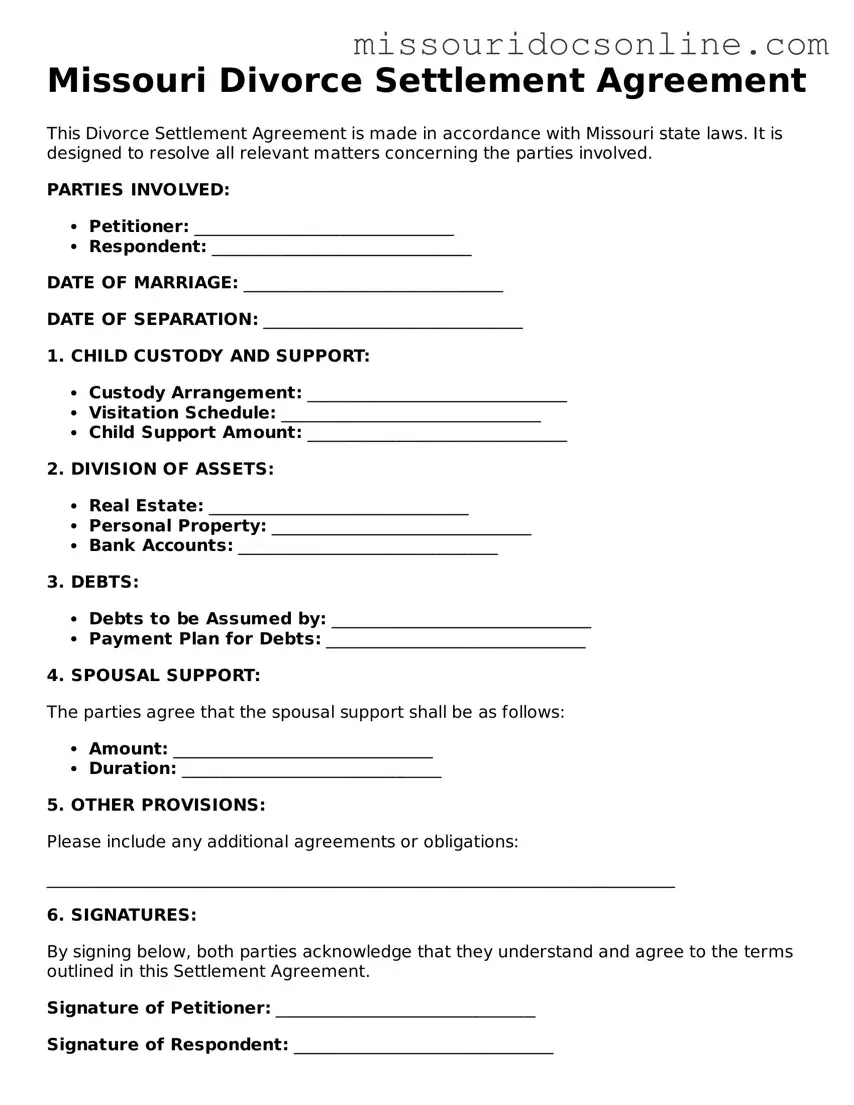Attorney-Approved Divorce Settlement Agreement Form for Missouri State
The Missouri Divorce Settlement Agreement form is a legal document that outlines the terms and conditions agreed upon by both parties during a divorce. This form serves as a crucial tool for ensuring that all aspects of the separation, including asset division, child custody, and support arrangements, are clearly defined and understood. To streamline your divorce process, consider filling out the form by clicking the button below.
Access Divorce Settlement Agreement Editor
